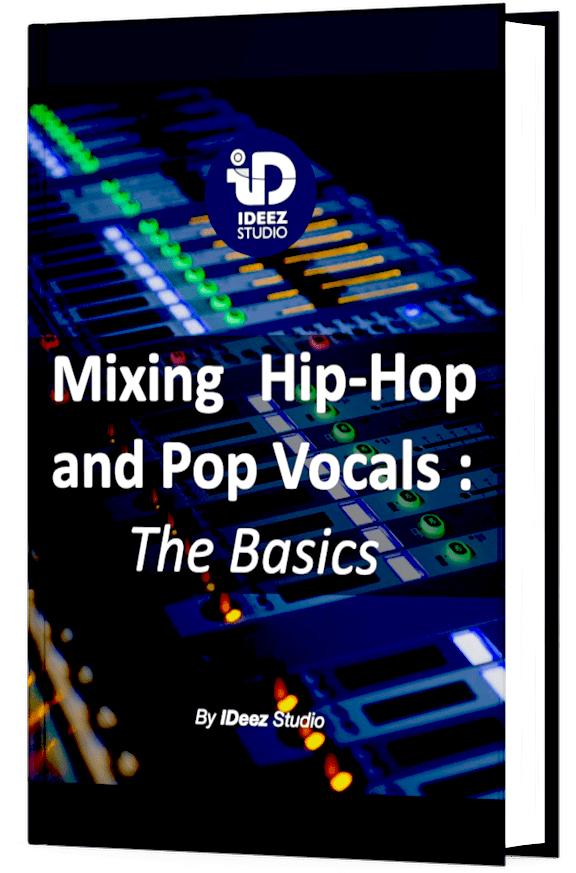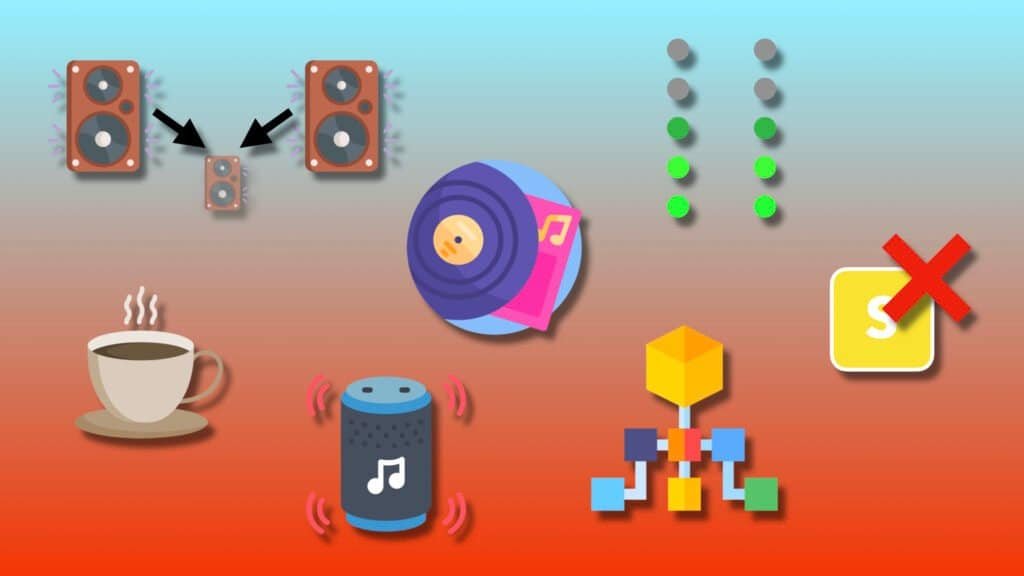In music mixing, being able to use a compressor is essential for a quality result. On vocals, using a compressor is a complete game changer. But how do you use compression on rap vocals to get pro results? Are there any techniques or steps to follow? Are there any mistakes you should not make? I give you all the secrets in this article!
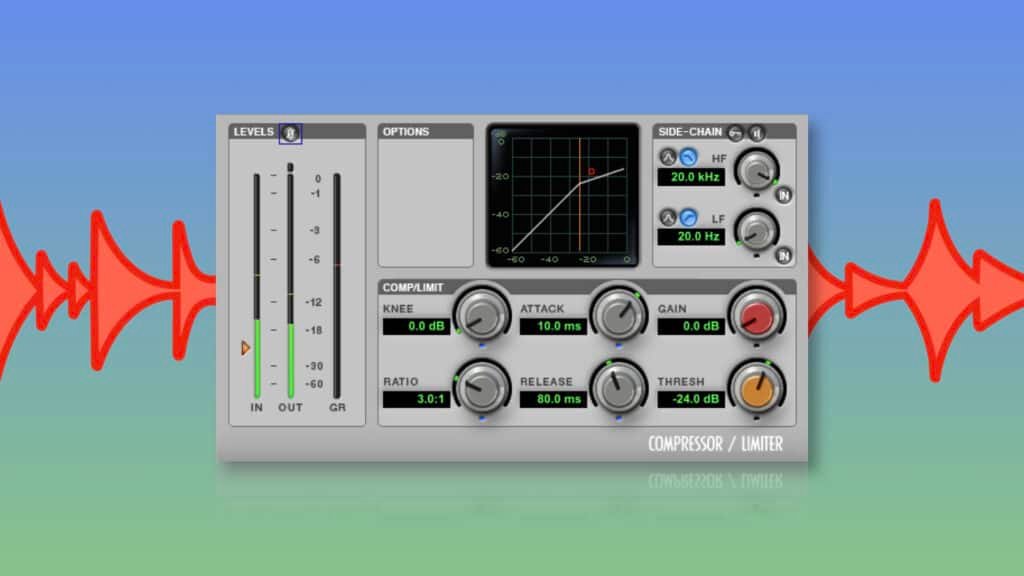
Here are 5 essential things to do when using compression on rap vocals:
- Use several compressors
- Grab the peaks first
- Capture the whole signal then
- Re-adjust downstream
- Use parallel compression
Need a professional sound engineer specializing in pop and hip-hop mixing ? Great! Take a look at our services and let’s blow up your career together!
Let’s start now!
What is the purpose of compression?
Before you even consider using compression on rap vocals, it’s important to know why. Indeed, having a purpose behind every mix choice is something to always think about when mixing.
When it comes to compression on vocals, there are generally two purposes that stand out (although they can be multiple and more complex):
Reduce the dynamics
Reducing the dynamics of the processed signal is the most theoretical and basic purpose of a compressor. As a reminder, the dynamic range of an audio signal is the difference between the lowest and highest levels. There are two main types of dynamics:
- Macro dynamics: This type of dynamics takes into account the differences in level of a signal over a relatively long period of time (typically an entire song).
- Micro dynamics: This second type of dynamics measures the dynamics of an audio signal over a very short period of time (a transient, a percussion, a guitar string attack,…)
In both cases, a compressor will allow to avoid short term (micro-dynamic) and long term (macro-dynamic) level jumps.
By reducing the dynamics, you will always get a more controlled and straighter result. The use of a compressor is even more essential with a source such as voice, which often has a fairly high dynamic range.
Add Punch, energy, warmth and character
But behind this simple principle of dynamic reduction lies something that all sound engineers seek through compression: to add punch, energy, warmth and character to the processed source.
Indeed, if you use this dynamic tool in the right way, the energy that comes out is inimitable without a compressor. As for vocals, compression will make them sound much more robust and punchy.
But how can a tool like the compressor have so much influence on the energy of the source?
- First of all, because compression, and therefore dynamic reduction, will increase the RMS level and therefore the perceived level. And anything that sounds louder always sounds more exciting.
- Secondly, because compression has an influence on the frequency spectrum of the source and will always make the processed signal sound warmer and rounder.
- And finally, because good compression adjustments will emphasize the energy of the attack and decay and thus make the signal punchier.
This is why compression on vocals is so popular in music mixing.
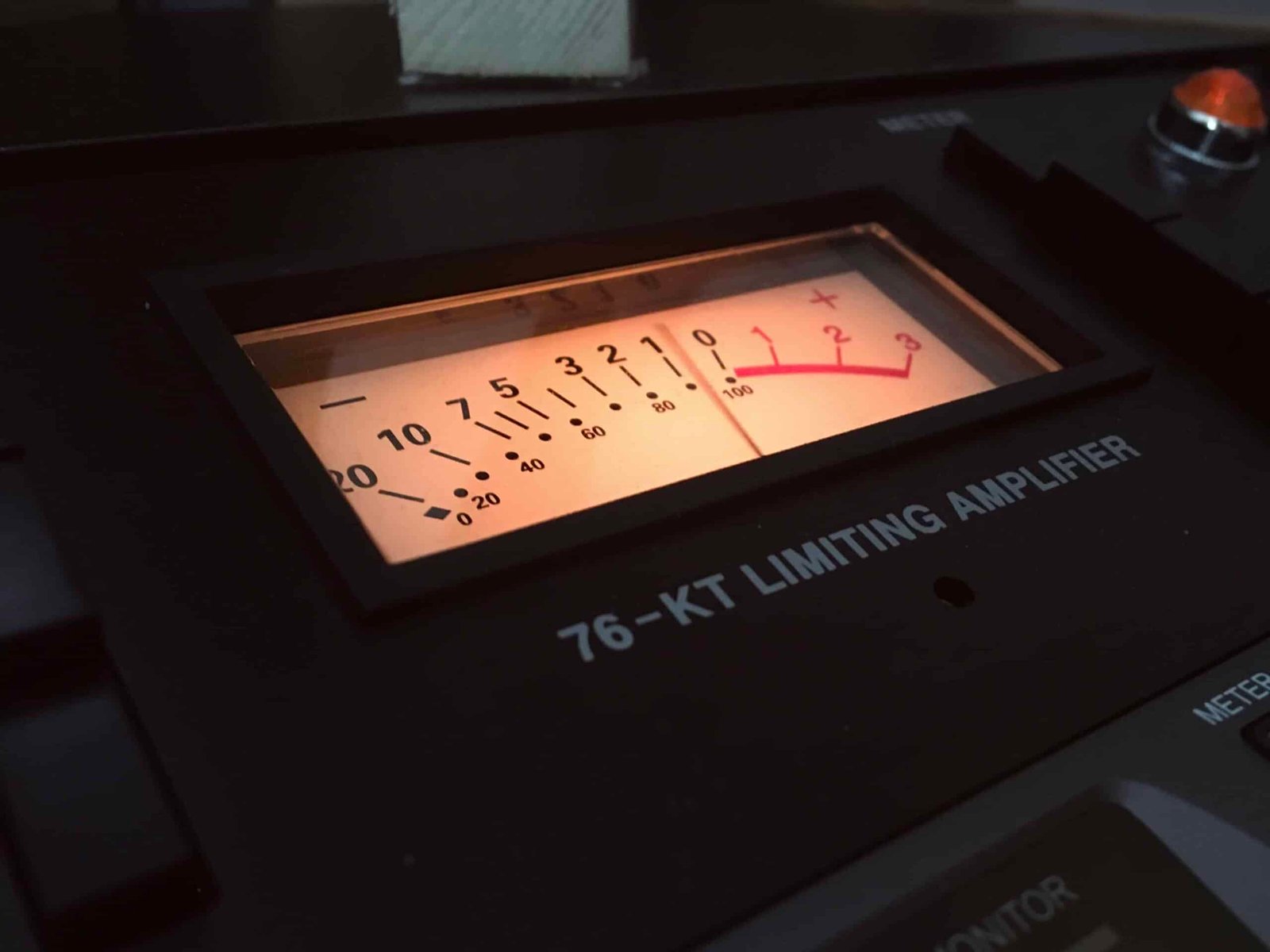
The basics of compression on vocals
Although this article aims to give you relatively advanced techniques, I thought it was important to remind you about the basics of compression on vocals. And in particular the use of compression on rap vocals, which is the subject of this article.
No matter what level you are at when it comes to mixing rap vocals, it’s always good to have a little refresher course to make sure you understand the more complex and advanced techniques.
If you don’t think you need it, you can of course go straight to the heart of the matter… I won’t blame you! But if you think you need a little reminder, let’s go!

The classic parameters of compression for rap vocals
To mix rap vocals and get the best results, the compressor attack should be between 2ms and 8ms with a release time between 50 and 100 ms, adjusting the ratio to around 2.5:1. The threshold level will always depend on the input gain of the vocals but will generally be between -15 and -25 db.
These figures are obviously theoretical and will always vary depending on the vocals processed and the mix objectives. But how to adapt them in the right way to rap vocals? Here are some details that will help you to adjust your parameters more accurately:
- Attack time: Shorter attack times will emphasize volume control. But it will be less transparent and may alter the energy and natural character of the vocals. Longer attack times, on the other hand, will give more punch to the rap vocals.
- Release Time: A shorter release time will give a more lively, open and dynamic result. But a longer release time will result in more robust rap vocals.
- Ratio: A lower ratio makes the compression much more transparent and natural, but may not decrease the dynamic range of the signal enough. A higher ratio will necessarily control the peaks of the rap vocals better, but may give an impression of over-compression
The most important thing is always to trust what you hear, not what you see on the compressor.
ℹ️ When you mix vocals, do you put your EQ before or after compression? Does it change anything? I give you the answer here: Vocal Mixing: EQ Before Or After Compression?
Don’t over-compress your vocals
Contrary to what many vocal mixing enthusiasts may think, compression is not the magic bullet for sounding professional. It is a tool to achieve the desired result, but not the miracle solution. This is why you should not abuse it and always be able to answer the “why?” before opening a new compression plugin.
Compression errors are costly. They can quickly turn a mix from super pro to totally amateur just because of one or more badly controlled compressors. Using compression in a more extreme way requires first of all a complete mastery of the basic techniques of compression on vocals.
So, before you start reading the rest of this article, always keep in mind that compressing more will never make your mix more professional. You always have to find a balance between control and energy.
Before you use compression on vocals…
Before you start compressing your rap vocals, you need to make sure that one thing is unified at the input: the gain.
As I told you, voice is a very dynamic instrument, sometimes too much! So much so that it can sometimes create weird over-compression effects that can quickly become unpleasant even for non-experts in music mixing.
Even though it may seem counter-intuitive to the purpose of compression, I advise you to unify the gain of the rap vocals before they attack the first compressor.
A manual gain adjustment will always sound better than an “automatic” compressor adjustment which, along with the attack and release, may completely distort the natural dynamics.
The two pictures below are a perfect representation of the situation of vocals whose dynamics were much too high to attack any compressor.
Before any gain staging:

After gain staging:

BUT on’t fall into the trap of adjusting the gain according to the waveform you see. Always adjust the gain according to what you hear!
Now it’s time to get to the heart of the matter! Here are all the techniques that will allow you to compress your rap vocals in the right way and get a pro result on each of your mixes.
1. Use several compressors
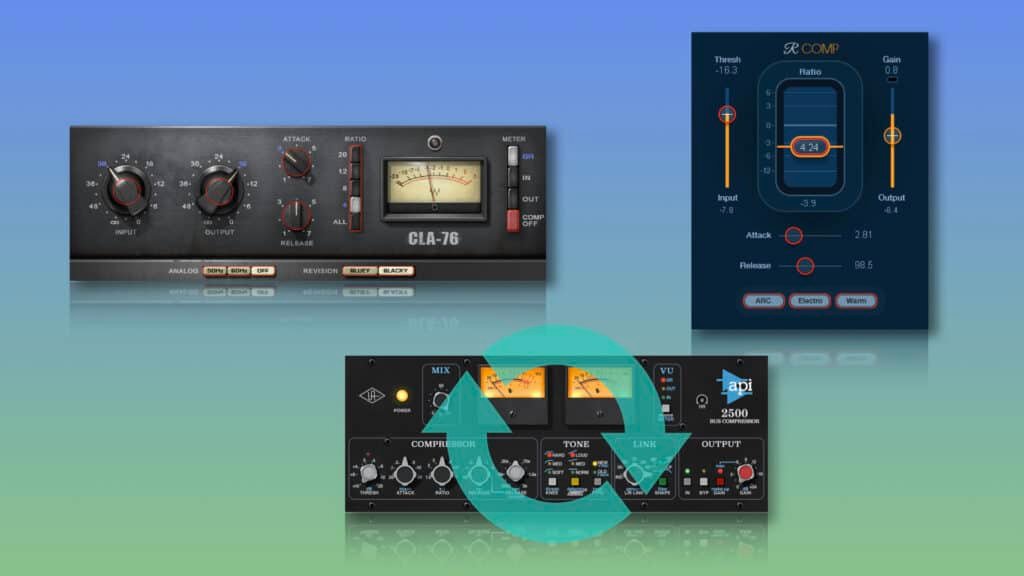
As mentioned at the beginning of this article, it is essential to know why you want to compress your rap vocals and the result you want to achieve from this compression.
But it happens very often that there are multiple reasons for compressing vocals. This makes it difficult to answer several “whys” with one compressor. You may get confused and lose track of your ideas and mixing goals.
But if you need to compress your rap vocals for multiple reasons (although this is not always the case), the solution is simple: use multiple compressors.
In vocal mixing, compression is generally divided into two main types:
- Dynamic Compression: The so-called dynamic compression corresponds to a use of the compressor in the most classic way: to reduce and control the dynamics. Its purpose is not to play with the energy or character of the vocals, but to make sure that the dynamics are not too high and remain controlled throughout the song.
- Tonal Compression: Tonal compression is used to give character to vocals. Its purpose is no longer really to control the dynamics. But to create a new tone and color of vocals thanks to the compressor. You can play with the attack and release time but also with some specific types of compressors to get the desired result.
These two distinct types of compression correspond to two stages of vocal mixing, which we will describe in the rest of this article.
2. Grab the peaks first
In vocal mixing, the very first thing to think about before enhancing anything is to put control first. If you skip this step, you risk missing your entire vocal chain.
The voice is a very dynamic instrument, so the first thing to do is to catch peaks and jumps in level to avoid bad surprises later.
For this step, there is no need to act on the whole signal. Compressing only the most obvious level jumps should be the priority.
It is not necessary to use specific types of compressors to achieve a certain result. The most classical compressors will be sufficient and even efficient for this kind of processing.
I often use the RCompressor from Waves which I find 100% ideal for this first vocal processing. But, again, you can use the stock compressor of your DAW, and you will get equally professional results!

What values to target?
Knowing all this, what are the parameters to be privileged for this dynamic processing? Here are the classic settings you can target:
- Threshold level: The choice of threshold level is crucial at this stage of vocal processing. Remember that at this level, the priority is to keep control over the dynamics. You will need to adjust it so that it is just above the average level but right in the peaks. If the gain of your rap vocals is correct, the threshold level will usually be between -10 dB and -15 dB.
- Ratio: When you say level jump, you also say wide dynamic range. We want to keep full control over the dynamic range before going further in the processing. That’s why it will be necessary to privilege rather high ratio values. I would advise you to aim for a ratio between 6:1 and 8:1, depending on the rapper’s dynamics.
- Attack Time: Target attack values short enough to be sure to catch all level jumps and peaks. I suggest you aim for values between 1 ms and 3 ms.
- Release Time: The release time should be short enough to be as transparent as possible. But not too much either to avoid that the compression creates a pumping effect. The best results will generally be found with a release time between 25 ms and 40 ms.
Even if only the peaks are normally processed, it is possible that the overall level of the rap vocals will drop slightly. So don’t forget to adjust the makeup gain at the end of your treatment.
Gain staging is also one of the keys to a professional vocal mix.
3. Capture the whole signal then
After having the dynamic control comes the enhancement. This is where the so-called tonal compression comes in.
At this stage, things become a little more complex. The threshold has to be adjusted with great precision, the attack has to adapt strongly to the vocals, the release too,… In short, this requires more precision and adaptation than purely dynamic compression.
While the more traditional compressors will always do the trick, some very specific compressors will be ideal. In my opinion, there are two compressors that should be used to add energy and character to your rap vocals.
A. Empirical Labs EL-8 Distressor
This compressor is one of the most used tools in the history of music. It is particularly appreciated for its versatility. Indeed, it can be used on vocals, snares, guitars,… In short, in many different mixing situations!
When it comes to compressing rap vocals, it will add a unique punch that will completely transform the tone and timbre of the vocals you are working on. Two emulations stand out:
- The emulation of the same name built by UAD that comes very close to the authenticity of the Distressor hardware.
- The FG-Stress from Slate Digital which has a more pronounced tone and the advantage of being able to be combined with other tools in the same plugin thanks to the Virtual Mix Rack.

B. Universal Audio Urei 1176
This FET compressor has also been used in studios around the world on all the greatest hits in music history.
This compressor is highly regarded for the unique character it adds to processed sources. This legendary tool creates a slight distortion at a certain gain reduction (just a few dB) that creates that signature 1176 character, warmth and tone.
The best emulation for rap vocal compression is in my opinion the CLA-76 from Waves. It’s the one that most emphasizes the particular character that this incredible tool can add.
The last particularity of this tool is its extremely short attack. This can sometimes be a flaw in the vocal mix, “choking” the natural punch that can come out of the vocals. You will understand why in the next point.
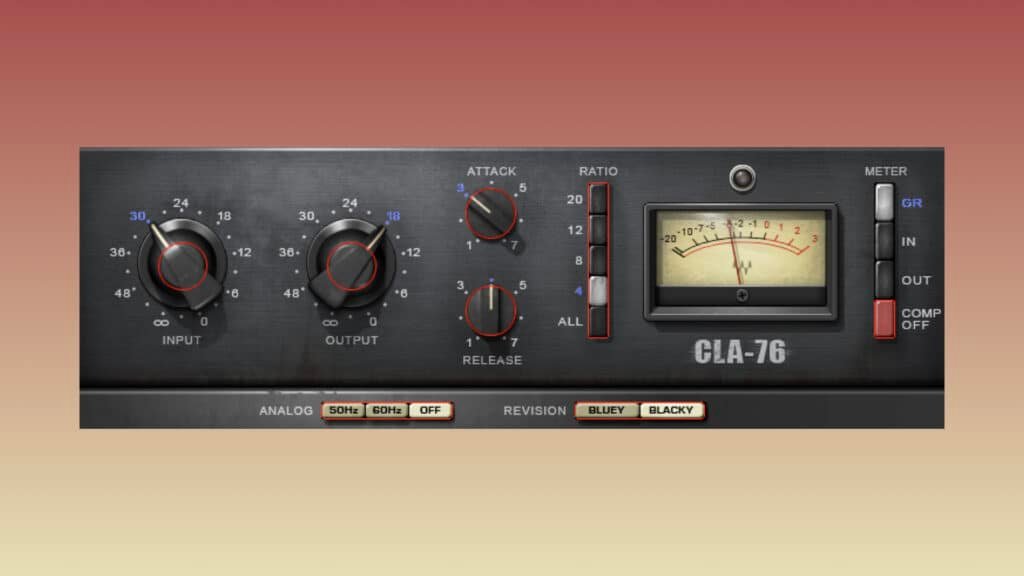
What values to target?
Whatever tool you use to add tone to your rap vocals through compression, the most important thing is how you use it. Targeting the right settings is crucial for a good result. Here are the ideal parameter values:
- Threshold Level: With rap vocals, if your gain staging is correct, you should be between -20 and -25 dB. At this stage, you can clearly “get into” the signal a bit more by lowering your threshold level a bit. Don’t forget that we want to add punch to the entire signal, not just to the higher levels.
- Ratio: The ideal ratio will generally be between 2.5:1 and 4:1. As we are acting on the average levels of the vocals, you should not raise the ratio too high, at the risk of over-compressing very quickly. This is for me the parameter that requires the most precision. Don’t hesitate to compare the results with different ratio values.
- Attack Time: Between 5 ms and 10 ms. Unlike the first stage of compression, you can now let the compression “breathe” a little more by choosing slightly longer attack time. The longer the attack time, the more punchy your vocals will be, but be careful not to under-compress: we really want to add energy!
- Release Time: Between 50ms and 100 ms. A relatively long release time will allow the listener to feel a little more the influence of the compressor on the rap vocals. If you choose your parameters well, a certain energy and robustness should come out of your compression.
In short…
Whatever settings you choose, always keep in mind that what you hear always comes before what you see. If the settings you choose deviate slightly from the theory but the rap vocals you hear are energetic, warm and punchy, go for it!
Working on screens these days has its positives. One of them is that you have all the information in one place. But it has one big flaw: we are often trapped by what we see. So try to keep your eyes away from your screen as often as possible!
4. Re-adjust downstream
Contrary to what you might think, there is nothing wrong with reversing some mix decisions. All professional mix engineers readjust their settings during the mixing process. That’s how you’ll get the best results.
Other plugins will be in your vocal chain and will automatically change the way your rap vocals sound. EQs, harmonic enhancers, multi-band compressors,… All these tools completely change the frequency spectrum of your vocals.
If you are one of those who mix vocals first, you are also likely to have to make some choice changes. Because let’s not forget that mixing means being able to mix several sources together to form the most unified product possible. Your vocals could sound great on their own, but not fit in the mix.
But be careful, this doesn’t mean that you have to question all those mix choices and spend hours and hours re-modifying what you’ve done beforehand. That’s not the point. The goal behind this re-adjustment process is to be able to react to what you hear in order to get the best possible vocal mix.
If you have adjusted the compressor settings well from the beginning, the changes should not have to be drastic, they should be subtle changes. Too many changes can make you go in circles!

5. Use parallel compression
The principle of parallel compression consists of blending two identical audio sources, one of which is compressed in a hard way to obtain a more robust and energetic audio result.
The technique of parallel compression is misunderstood by many music mixing enthusiasts and is therefore relatively little used. However, when used properly, it can create unique results that are difficult to imitate with the simple principle of insert compression.
With rap vocals, good parallel compression will always add extra energy to bring the voice to the forefront without playing directly on the volume fader.
But how do you implement this parallel compression technique? And how do you use it with rap vocals? I’ll explain it all to you now!
ℹ️ Need a complete guide to parallel compression? It could change the face of your future mixes: Parallel Compression : Definition And Applications
How to set up a parallel compression?
The way you set up your compression is very important because it should match the way you work. Here are the two main techniques for parallel compression:
A. By duplicating the audio track to be processed
The first technique is to duplicate the audio track to be processed, in our case the rap vocals. It is important to also duplicate all your inserts already installed so that you don’t end up with vocals that are not cleaned in parallel.
You will then just have to add your compressor at the end of the vocal chain of your duplicated track. The rest is explained in the next point.
The problem with this technique is that if you make changes in the main vocal track, you will also have to make them in the parallel track. This can sometimes be quite restrictive.

B. By using the auxiliary principle
The second most common technique is to create an auxiliary track to send the vocal signal to. All you have to do is choose a certain input bus in your aux track (say bus 9) and send the vocals to it in the sends of your audio track to be processed.
I personally find this technique more convenient. Since the signal that is sent to the auxiliary track is exactly the same as the one that comes out of the audio track. And any potential insert changes will also apply to the auxiliary track.

How to use parallel compression?
Whether you prefer to use the duplicate or the auxiliary technique, the principle remains the same: compress the parallel track very hard.
But what are the best settings to compress rap vocals in the right way? Here are the values to use on the parallel compressor:
- Threshold Level: The threshold level should be very low. The goal is to compress the whole signal in a rather extreme way, even the lowest levels! It will usually be between -30 and -35 dB.
- Ratio: The ratio needs to be high to get the maximum effect of parallel compression. I recommend a ratio between 8:1 and 10:1.
- Attack Time: The attack time must be very short. Indeed, as the compression applied is quite hard, it is necessary to avoid that peaks can escape and make the rap vocals too aggressive. Target values between 0.2 and 2 ms. The more aggressive the rap vocals are, the shorter the attack time should be.
- Release Time: As far as release time is concerned, you should aim for fairly average values. Not too long to let the compression breathe. But not too short to avoid any pumping that would ruin the rap vocals. You’ll generally find yourself around 30 ms.
What type of compressor should You go for?
Again, conventional compressors such as stock compressors from your DAW will always do the trick. You just have to choose the right parameter values.
But if you have the opportunity, I recommend two very specific types of compressors:
- Either a FET compressor (such as the CLA-76), which has two advantages in parallel compression. The first is its ultra fast attack (a few microseconds) which will not let any peaks pass. And the second is the character it will add to the rap vocals, typical of FET compressors.
- Or a VCA compressor (such as the API 2500) which has the advantage to bring a lot of robustness and strength to the rap vocals.
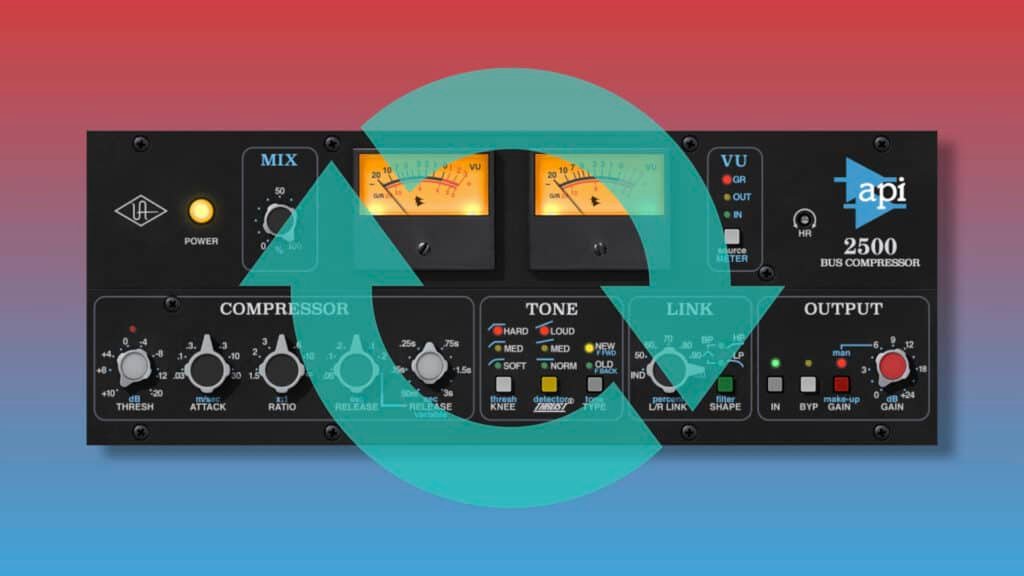
Need a professional sound engineer specializing in pop and hip-hop mixing ? Great! Take a look at our services and let’s blow up your career together!
Let’s start now!
Conclusion
What you have to keep in mind when compressing rap vocals in the right way is that you always have to adapt the parameters of the compressor(s) according to each voice, while staying around the theoretical values.
Using multiple compressors is also a principle that is essential to get rap vocals compressed in a professional way. First control the dynamics, then add warmth, timbre and character through a second compressor and/or parallel compression.
Trust what you hear, and always try to feel the energy that comes out of each compression stage.
If you have any questions about how to compress rap vocals or about anything in the field of vocal mixing, please contact me, I’m always very happy to help!
Related Articles:
Vocal Mixing: EQ Before Or After Compression?
Parallel Compression : Definition And Applications
My favorite tools for mixing pop and hip-hop music:
Plugins
In the field of auto-tune, I’m convinced that nothing’s better and more efficient than Antares Auto-Tune Pro. As for the EQ’s, FabFilter Pro-Q3 and Slate Digital Infinity EQ are, in my opinion, the best tools. For compression, I have 2 favorites plugins: Waves RComp and UAD EL8 Distressor.
As for reverb, I’m a big fan of the Soundtoys Little Plate, but generally, I go for the Valhalla VintageVerb for its versatility. I also love the Arturia Rev PLATE-140 and the UAD Pure Plate for its organic side.
Headphones
The closed headphones I love and will always love using for mixing pop and hip-hop music are the Beyerdynamic DT-770. As for the best open-back headphones, I use the Sennheiser HD600 headphones, and I’m really happy of them!
Monitors
Having a pair of Yamaha HS7 in its studio or home studio is always cool for more excitement while listening to your mixes. The Adam Audio T7V monitors are also super accurate. In my studio, I also have a pair of Genelec 8030 for their reliability.
Hardware gear
For anyone who wants to start using hardware in their mixes, I always recommend these 2 units from Klark Teknik: the EQP-KT and the 76-KT. Don’t forget to use good converters, such as the Apollo interfaces. This is essential for a good rendering.



